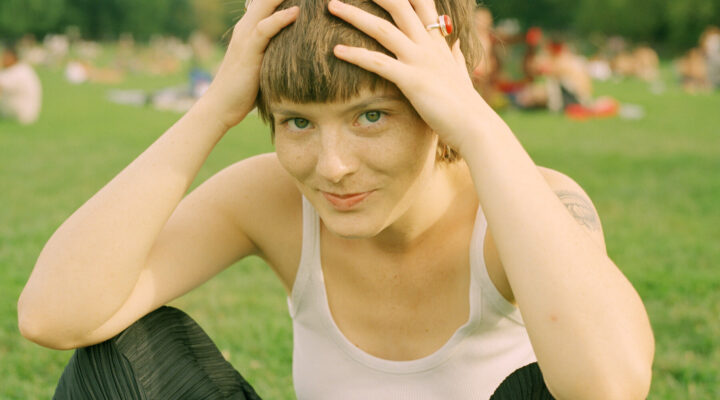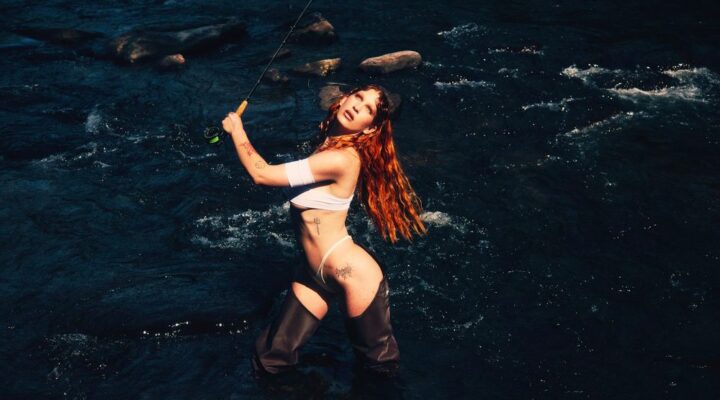A Conversation with the World After
Text by Vera Santana
It was this year that I knew what it was like to have the wind knocked out of me. And like me, there are many.
We have our lives mapped out before us like stones dispersed throughout gardens to lead the way. We learn how to walk, we go to school, we fall in love, we get hired, we get fired, we win and we lose but we go through the motions. This is what I call growing pains. These experiences don’t have a face, it can happen to a pre-teen or to an adult who’s had many more trips around the sun. These pains can catch you on a trip exploring the world or at midnight in your bedroom. They’re the existential and oftentimes uncomfortable discoveries of our upsides and downsides as partners, lovers, co-workers, and friends.
It’s a recalibration that we all encounter and learn from. But growing pains or not, we at least had the comfort of knowing what the world ahead of us would look like as we figured it out— like tattoos on the skin that simply won’t leave your side. But what is it like now that we don’t have that certainty anymore? The world we knew six months ago looks nothing like the world we inhabit today. The anxiety-ridden truth is that we don’t know what the future looks like anymore.
But as with everything, there’s a silver lining.

It was my visit to Oude Kerk that shined a light on the before and after of our most recent piece of history, COVID-19. There I was visiting the chapels of Amsterdam’s oldest building when I tried to fathom what those walls had seen then and what they see now. Today’s art, tomorrow’s heritage, they say. Oude Kerk’s exhibition The World After: Conversation Pieces is beautiful in its context, here are thirteen artists talking about the future in a building that really knows what the past looked like. All thirteen artists were prompted with the same question: What will the post-COVID world look like? They responded in a series of short films, all reaching different conclusions as it’s an increasingly complex and abstract question to answer nowadays.
Yaïr Callender’s piece Wanneer de Zwaluwen Leeg Vliegen really resonated with my own understanding of the world after. The artist’s video piece is about his grasp on isolation and the beauty he is able to see in it. But with beauty, there can be pain and so he recognizes how detrimental this kind of isolation can be for someone else. Callender experienced this uneasiness in a friend who struggled to differentiate isolation from loneliness. It is possible to experience solitude without the feeling of loneliness, but the two are very difficult to separate sometimes.
Yet this isn’t the narrative Callender chose to take on for himself and instead, saw the world after as a way to press pause on life and re-direct our attention to our immediate surroundings. After all, this is something our society has lost practice with in the extremely globalized planet that we live in. He chose to illustrate this ambivalence with simplicity and austerity in the shape of origami; he said, “it envelops the staying at home, the being alone and the world that has temporarily been put on hold. But also hope for the world after.”
A piece that further elaborated on our experience with COVID-19 and the world after was Stéphanie Saadé’s Our Value’s Value. Experience is subjective by default and so are silver linings. Saadé’s video piece emphasizes the fact that we embarked this pandemic from different standpoints based on personal experiences, cultures, and predispositions. She says that for Lebanese people like herself, the pandemic crisis was “neither the first nor the last crisis that radically turned [her] life upside down.”
The constant sociopolitical unrest in Saadé’s country meant COVID-19’s impact affected her differently as it only added to her already very prominent and existing problems. But the artist doesn’t leave us in the dark wondering what else could go wrong that hasn’t already. Instead, she remains optimistic and lets us know in her piece that, “although we [are] less physically active, our minds [are] overflowing with new ideas.”

These pieces are only two of the thirteen which have inspired me to view our past world, current world, and the world after in a myriad of ways unknown to me before. I think that this kind of exposure is like a peephole into other’s thoughts that add to our collective experience as a society. COVID had asked us to stay indoors, apart from our loved ones, and away from almost every mundane activity that we practiced before. But what kept and keeps bringing us together is our collective experience. The silver lining to me is the unity that comes with a group of individuals experiencing the unknown together. It’s the fact that we are all on uncertain grounds, experiencing the new every day together, that truly makes it time to start having a conversation with the world after.
I decided to extend this conversation to Subbacultcha’s community with a similar prompt: What are the roses and thorns of the world post-COVID-19? Elaborating on the question that was also asked to the artists for The World After and going into a conversation with our community means discovering other’s silver linings as well.
The responses varied but you’ll find yourself recognizing the fact that time and human connection are on our agenda post-COVID-19. The world now, and possibly after, is perplexing because our social distancing is both the glue and the kryptonite of our existence. We’ve had to reinvent everything from eating at restaurants to working from home in a lengthy process of trials and errors. It’s that reinvention that has lead us to take cover in the solitude of our homes, leaving us with more time on our hands to nurture unique relationships with others.
So while we are thinking of all these ways to maintain a safe distance from each other, we are also creating more space to be closer. Boundaries that we once had such as geographical differences are a limiting factor of the past. Our reach has extended to other dimensions and our place of residency can be different than our place of work, for instance.
But there’s an issue with our distancing. You see, social distancing is tricky terminology in my opinion. User @_404prox_pixie states it simply, “social anxiety pandemic”. We are being asked to stay away from each other “socially” and unfortunately that hasn’t always meant just physically. We cannot hug hello and we cannot kiss goodbye, and although those are physical actions, what do they mean socially?
My conversation with the world after includes considering what this space from each other can become. I can imagine two different extremes: a world suffering from a social anxiety pandemic versus a world blessed with newfound connections that extend IRL (in real life) interactions. Only time will tell in which direction we are headed because neither you nor I have those kinds of answers. All that is left to do is to tread lightly, and trust that it will all float on alright.
The truth is that my world after and yours will be different and we will find haven in different silver linings. For this reason, I invite you to wander Oude Kerk whose walls and video pieces have a lot to feed your thoughts. And with that remember that today’s art is tomorrow’s heritage.
The World After: Conversation Pieces runs until the 3rd of January. The entrance of the exhibition is is free for Subbacultcha members. More info here.








